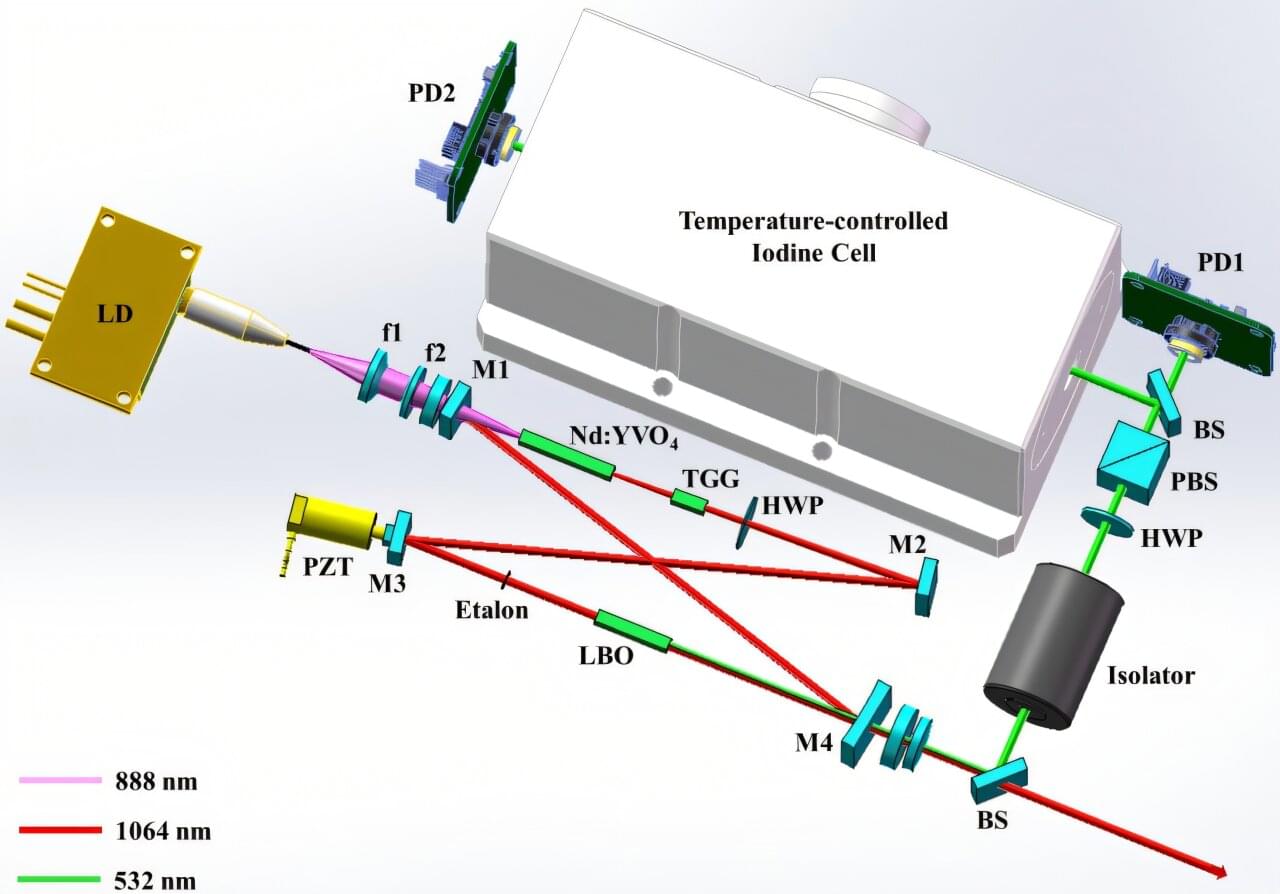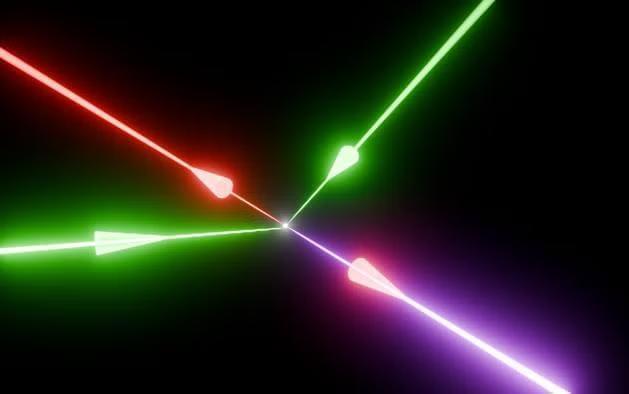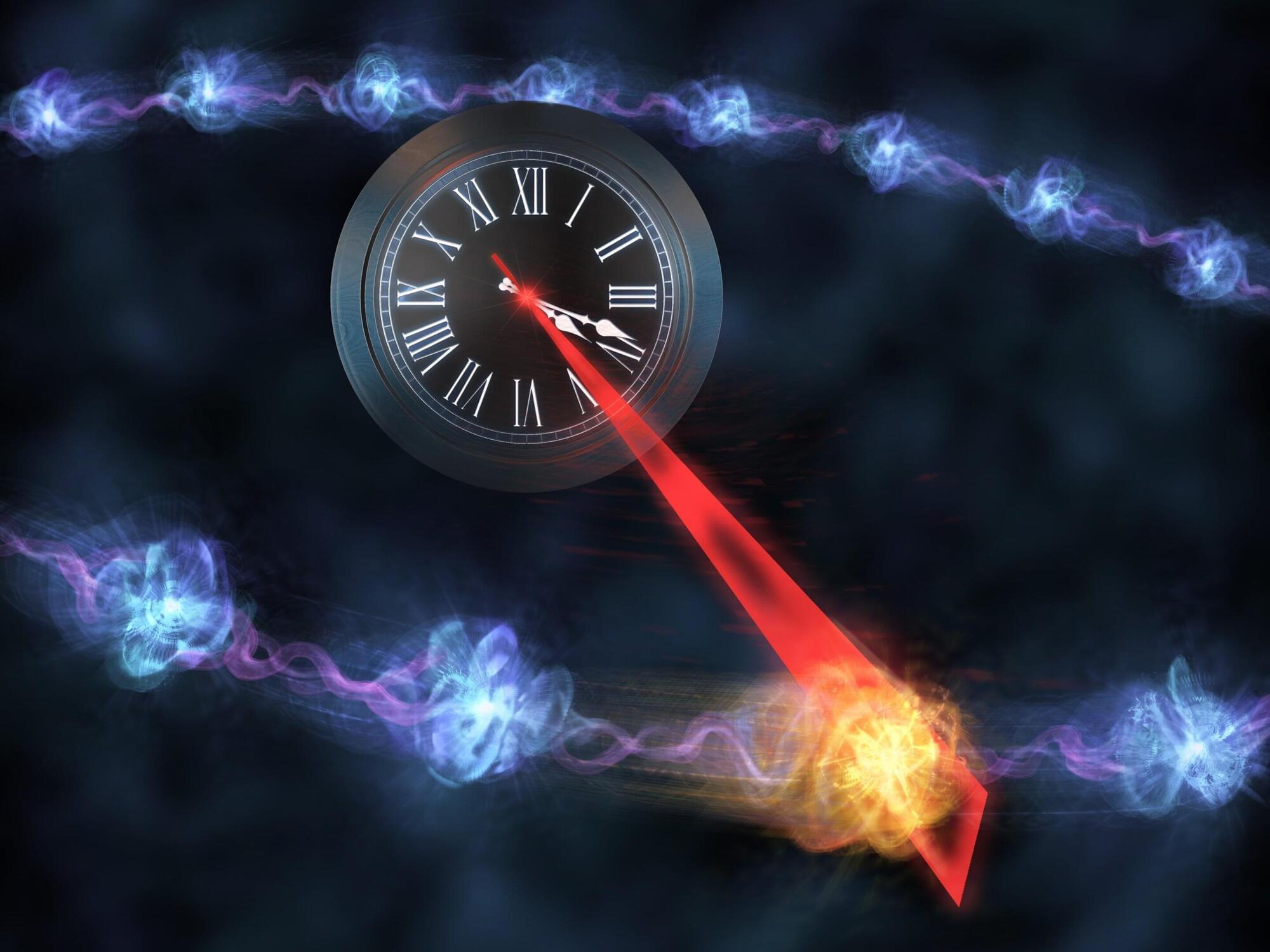A research team led by Prof. Zhang Tianshu at the Hefei Institutes of Physical Science of the Chinese Academy of Sciences has developed a compact all-solid-state continuous-wave (CW) single-longitudinal-mode (SLM) laser with high frequency stability using iodine-based frequency locking, advancing its application in atmospheric remote sensing and environmental monitoring. The study is published in Optics and Laser Technology.
CW SLM lasers are widely used in areas such as laser amplification, gravitational wave detection, and quantum optics. They also play a key role in atmospheric remote sensing and environmental monitoring. These applications require not only SLM laser output but also high frequency stability, which current semiconductor and fiber lasers struggle to provide due to limited environmental adaptability.
In this study, the team introduced a ring resonator structure combined with iodine molecular absorption frequency locking technology. By locking the laser frequency to the flank of specific iodine absorption lines and employing feedback control to adjust the resonator length, they achieved long-term frequency stability.








